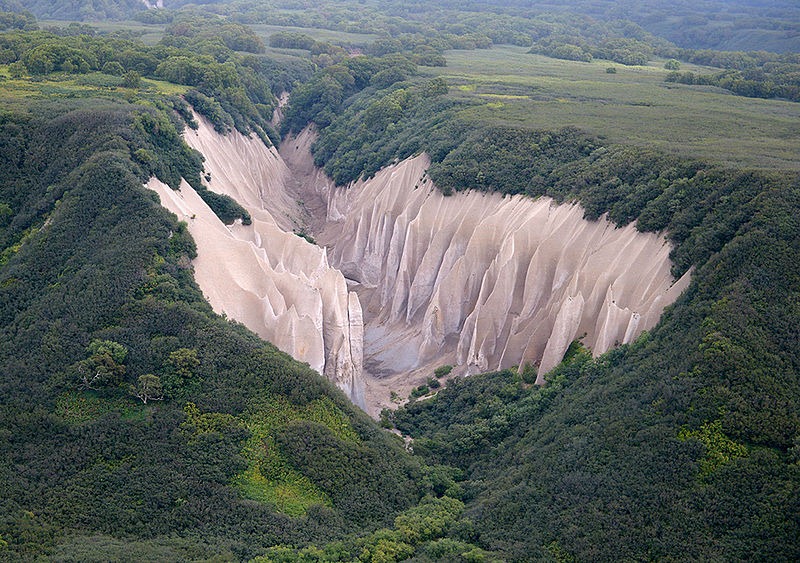At the southern tip of Kamchatka Peninsula, within the Southern Kamchatka Wildlife Refuge in Russia, lies Kurile Lake in a large caldera that was formed about 8,000 years ago in an enormous volcanic explosion which shook the entire peninsula. A huge amount of material was ejected during the explosion that produced thick pyroclastic flow deposits around the countryside, and rained ash five centimeters thick even a thousand kilometers away from the source. By the volume of pyroclastic materials blown into the atmosphere, scientists estimate that this eruption was seven or eight times more violent than the 1883 Krakatoa eruption in Indonesia and, most likely, resulted in serious climatic impacts on the planet. The volcano removed about 140–170 cubic kilometers of materials, and lava flows reached both the Pacific and Okhotsk Sea coasts of the peninsula.

At a location on the Ozernaya River, about 3 km west of Kurile Lake, the pyroclastic-flow deposit is about 100 meters thick. Subsequent erosion has carved a spectacular valley of pumice with tall “obelisks" that are said to resemble gigantic upstanding boats. This area is known as Kuthiny Baty, which means “standing boats” in Russian. According to the local legend, these “boats” belong to the God and creator of Kamchatka who used them when he went for fishing in the lake.
The Kurile Lake area is a national wildlife preserve and a national monument. It is a UNESCO World Heritage Site.
Sources: Kamchatka.org / Wikipedia / Kronoki.org























So if you slip while barefoot, is your foot smoother at the bottom?
ReplyDelete